Why carry all that SLR weight when can go mirrorless?
This blog post has been a long time coming but chalk it up to additional testing over this past year.
As some of you may know, this year I decided to take the plunge and kind of went all-out and bought everything I needed for my Micro Four Thirds Olympus set up. After travelling Asia in 2012, although I was very happy with how my photos turned out, the weight of it all was always a problem for me. I asked myself “there has to be a better way to go”.
Read more gear reviews
- Best Winter Photography Locations in the Magdalen Islands
- Review of the Best Travel Tripod by Peak Design
- Must-Have Winter Gloves For Photographers
- Kammok Swiftlet Review
- Our Best Photography and Videography Reviews
How to find the best travel deals?
- Hottest deals – Bookmark the frequently updated travel deals page.
- Car rentals – Save the most money through car rental coupon codes.
- Hotels – Use corporate codes or get Genius 2 tier with Booking.
- Flights – Have you ever heard of the “Everywhere” feature?
- Insurance – Make sure you’re covered for all of your adventure activities with the best travel insurance.
In This Article
How It All Started
The truth is, my discovery of mirrorless cameras started with a lust to get into underwater photography. All that diving made me want to get my own set up and so the hunt began. It was more accidental than anything because I was roaming around the forums and someone posted an amazing deal for an Olympus set that included the E-PM1 and the underwater case for only $499. It seemed like a great way to get started so I pulled the trigger. I also added the 9-18mm lens to the mix.
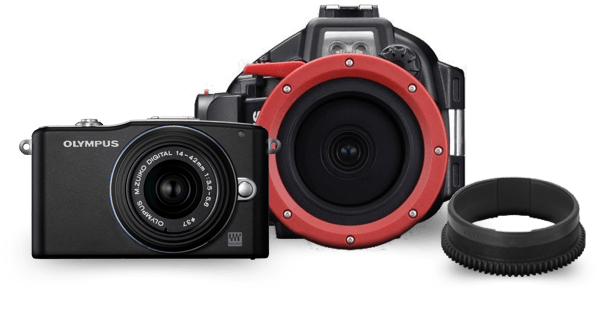
In hindsight I probably jumped the gun because after playing with the camera above water, the quality left a lot to be desired. See a few of the sample shots below. They actually weren’t too bad but I guess for me it was too big of a downgrade from full frame from a quality perspective and customizability in the camera. It was as basic as it could get. Almost everything was manual and there weren’t enough buttons to change the settings so you always had to resort back to the wheel buttons which was annoying.
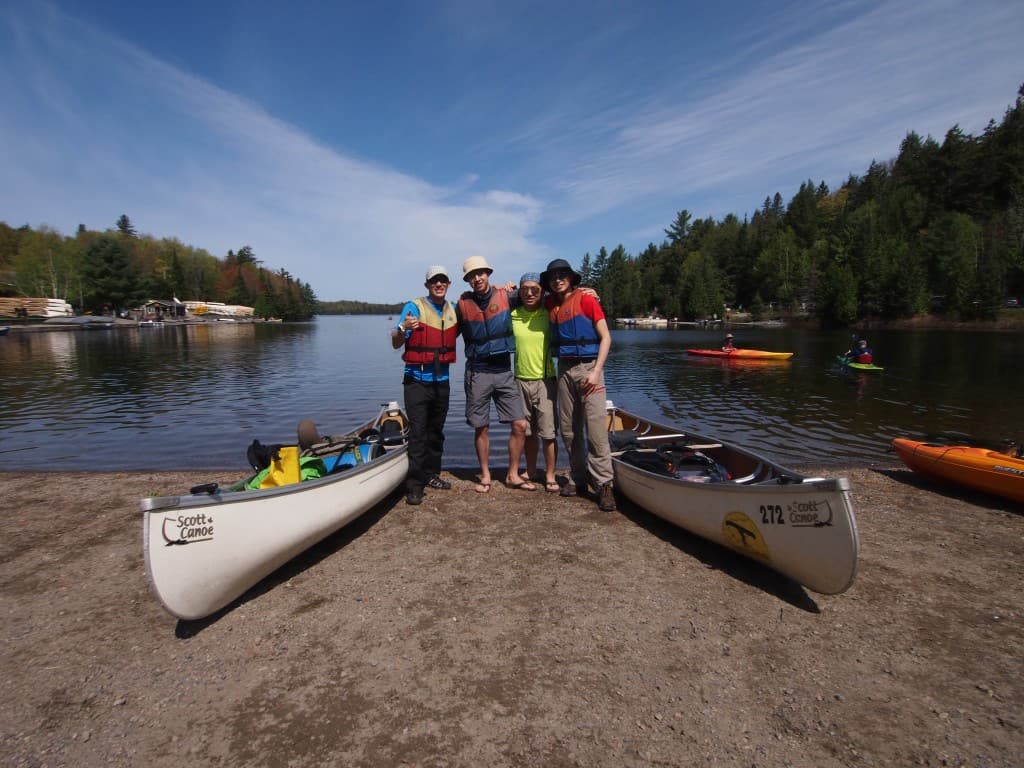
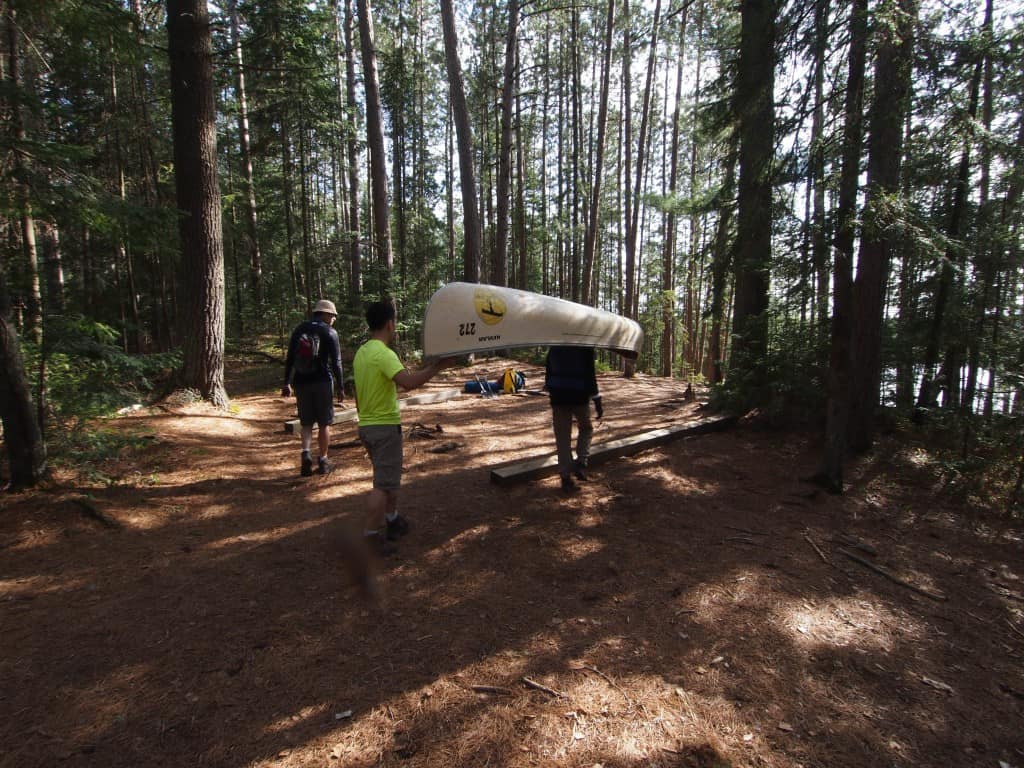
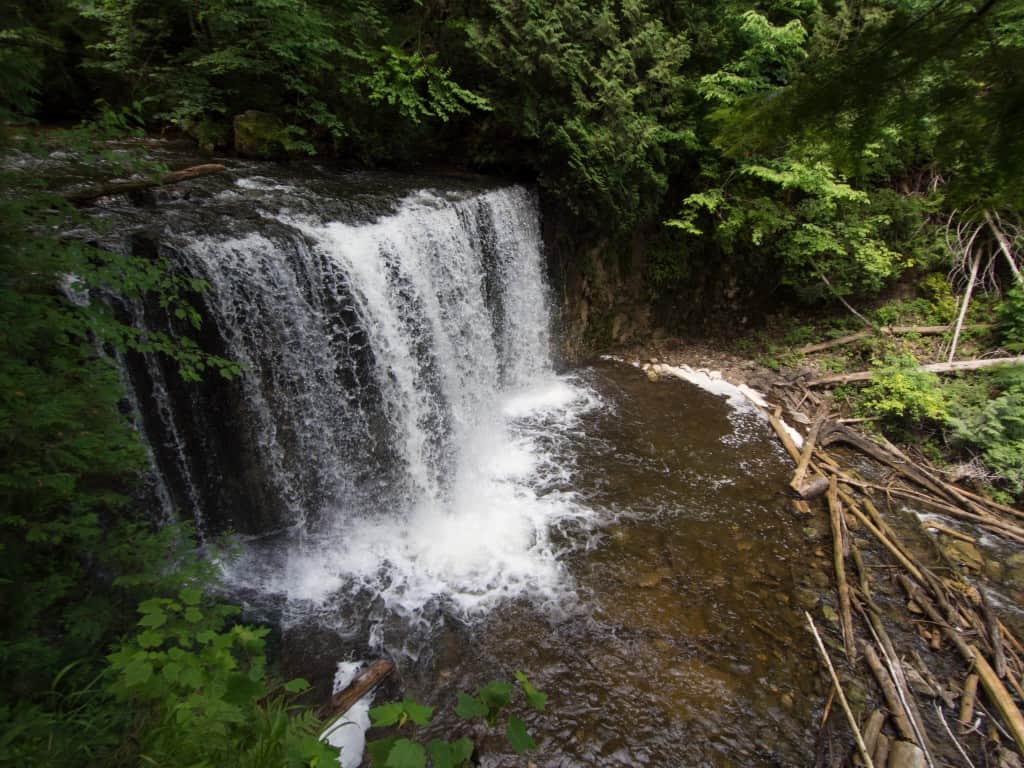
I got into my head that I needed to get something for underwater but after I thought about it some more, I realized that it was foolish thinking because the underwater camera would literally collect dust and only be used at most once a year. It made a lot more sense to focus more of that money on something that kicked ass on land which I’d use 10x more often.
I was then on the hunt for something better – something with better image quality, options and I guess a little more DSLR-like.
The Olympus OM-D
My incessant trolling of forums led me to the discovery of the Olympus OM-D which had been out for a year already but had received a ton of accolades for it being a top performer.
So in another online purchase frenzy and a lot of buying and selling on forums and thanks to Jia and favorable US exchange rate, I ended up with the following gear:
- Olympus OM-D E-M5 Silver
- Panasonic Leica 25mm F/1.4
- Olympus 75mm F/1.8
- Rokinon 7.5mm Fisheye F/3.5
- Panasonic 12-35mm F/2.8 (have since sold)
- Olympus 12-40mm F/2.8 PRO
- Olympus 45mm F/1.8 (have since sold)
- Olympus HLD-6
for OM-D
- Gordy Leather Wrist Strap
Some features that really made it stood out:
- 5-axis IBIS (image stabilization) built into the body. That means no need for lenses to have image stabilization.
- Weather sealed body
- Very good high-ISO capabilities
- Tiltable OLED screen which is great for shooting at the ground, waist or above the head angles
- Fastest auto focus system at the time of release
- Even shooting JPEG mode provides very accurate white balance and color
- Incredible amount of customizability in the menu to control image settings and camera operation
- Additional short cut buttons that was really lacking in the lower level cameras
- Built in EVF (electronic view finder)
- Quality on par with and if not better than APS-C (small sized SLR) sensors
- Incredibly small
- Loved the silver retro look
- 16.1 MP is plenty with 4608 x 3456 max resolution (vs 12.3 MP and 4032×3024 max resolution on the E-PM1)
What is Mirrorless?
I’ll make it super simple. Mirrorless cameras do not require the flipping of a mirror for the sensor in the back to capture the image. Instead, light directly passes through the lens and falls onto the image sensor just like your point and shoot and all phone cameras these days.
On the other hand, DSLRs use a mirror to divert light from the lens into a viewfinder so you can see what the camera sees. Then when you click the shutter, the mirror flips up out of the way so light hits the sensor to capture the image.
Why Mirrorless?
For a long time DSLRs have reigned king in the digital photography world. However the beginnings of DSLR made it flawed from the start. They were designed from its film predecessor and as a result, inherited its mechanical mirror, optical viewfinder and autofocus system. As a result this made it almost impossible for DSLRs to shed its weight and size. They also stayed the same size because the big manufacturers wanted to make it possible to use legacy lenses and so new lenses and bodies just maintained its mount sizes and a whole bunch of other technical jargon to make it all work. We’ve now reached the point where it’s been very hard to innovate in the DSLR space. We’ve pretty much reached the maximum potential aside from all the non-essential add ons like GPS, wifi etc.
So this is where mirrorless comes in. These camera manufacturers realized that it was time to reinvent the wheel. By building it with current technology at our disposal, it opened the door for more innovation and creation of a new format that could do away with some of the DSLR flaws.
Advantages:
- Smaller in size and lighter
- That’s probably the biggest thing right there for me. Without a mirror and prism for the optical view finder, these cameras can be designed a heck of a lot smaller
- No mirror mechanism
- This means less shake created from the flipping, less noise, easier to clean the sensor, very frame per second speeds since it isn’t dependent on mirror speed anymore
- Price
- The other part I loved about going to mirrorless. The bodies are typically cheaper but where you really save is in the lenses. What typically costs $1000 can easily be <$500 in the mirrorless world.
- More advanced viewfinder
- Since it’s no longer optical, cameras can overlay it with a lot more information
- Constant live preview like your point and shoot
- DSLRs typically require a button to push to flip the mirror up in order to see live preview
- Image preview in the viewfinder
- Digital zoom while shooting
- This has been one of my favorite features because whenever I’m not sure if something is in focus or not, I can zoom in on that area on the fly and correct the focus. This gives me even more reason to shoot manual focus now. This was incredible hard on my DSLR
- Unlimited focus points
- The potential for unlimited points is incredible. On my OM-D I can pretty much use my finger to press on the screen where I want it to focus and it does it. On DSLRs you are limited to X number of points
Disadvantages:
- Lack of optical viewfinder
- Despite all the things I said about having a digital view finder, because we’re so used to seeing things optically you’ll definitely miss the clarity of optical. Digital will always be limited by the resolution of the display
- Battery Life
- My DSLR was a tank when it came to battery life. I could go for days and not have to change batteries. With mirrorless, just like your point and shoot, you’re going to have to keep quite a few spare batteries handy when you’re on the road
- Lens selection
- Because it’s a new format you’re going to find that there isn’t going to be a lot of lens choices. It’s going to take a bit to develop
- No unity amongst manufacturers
- Every company basically has their own format which I suppose is the case with DLRs but is still damn annoying
Why Micro Four Thirds?
When doing my research, I had heard a lot of great things about the Sony NEX series as they got into the game really early. Samsung had done some good work too but what really caught my eye was this format called Micro Four Thirds (aka MFT, M43). The reason why it appealed to me was that this was a joint project between Panasonic and Olympus to create a single format that both companies would use together. This meant that if you bought a Panasonic or Olympus camera, lenses produced by either company would be compatible. For me it was about having choice and selection. Coming from DSLR and full frame, I wanted to have the best lenses possible for shooting and micro four thirds had some of the best quality glass out there and probably double the lens choices than anyone else.
I should also explain that there are two classes of DSLR – APS-C and Full Frame which i’ll be mentioning below. APS-C or crop frame are the entry to mid level DSLRs that have a smaller than 35mm sensor. They’re only slightly larger in sensor size to micro four thirds. Cameras of this class include the Canon T5i, Canon 7D, Nikon D5100 and Nikon D3200.
Comparing to My Full Frame DSLR
Now this is a question I probably get the most from people. How does my Micro Four Thirds compare to a DSLR and more specifically my 5D Mark II. I’ll talk about the two key points I was concerned with: Weight and size, picture quality.
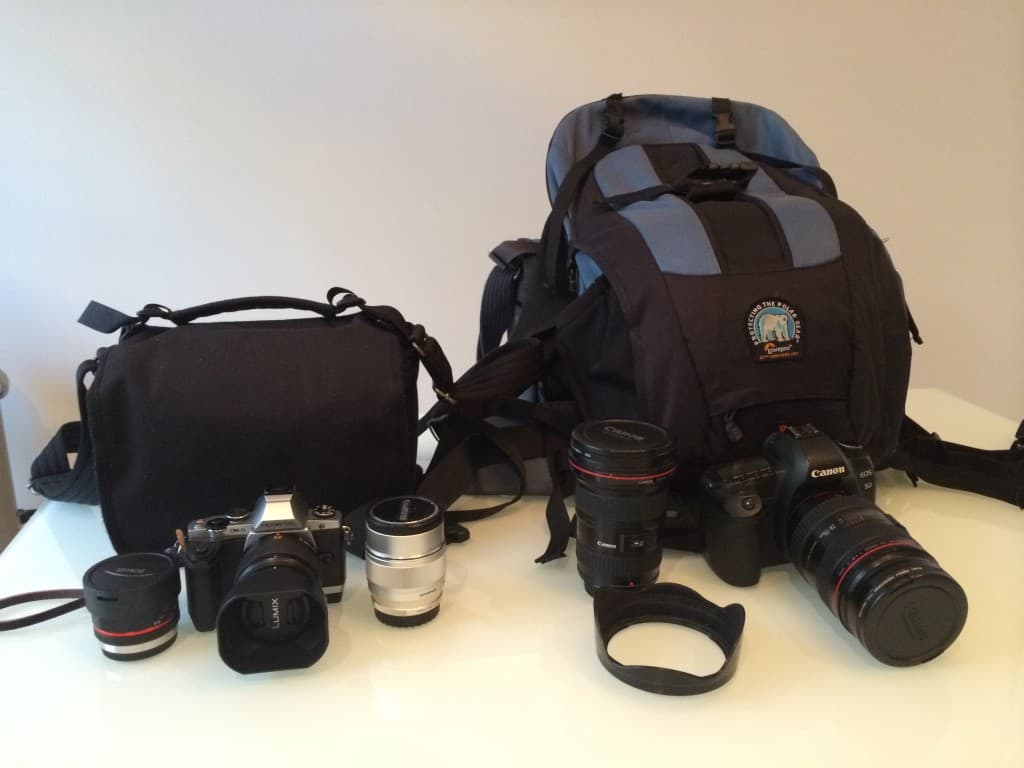
Weight and Size
Micro Four Thirds is the clear winner here. Lugging around the Canon 5D Mark 2 with 2 lenses (24-70 and 16-35) although produced some incredible photographs, was also a bit of a pain in the ass especially towards the end.
- Because I always had to have the camera on me, that also meant I had to have my camera backpack with me at all times
- This was a lot of weight on my shoulders the whole time. My shoulders and back were sore by the end of it all
- It was hot in the summer and with all that weight it meant a lot of sexy white salt stains on my shirt where the shoulder straps were
- It became draining to bring it with you all the time or have the camera slung over your shoulder in the ready position. Towards the end I definitely got more and more lazy with shooting
With my micro four thirds now, all of my gear can fit in a super small bag like the Think Tank Retrospective 5 – Black which is a super small messenger bag and weighs probably only one third of what my DSLR travel kit was.
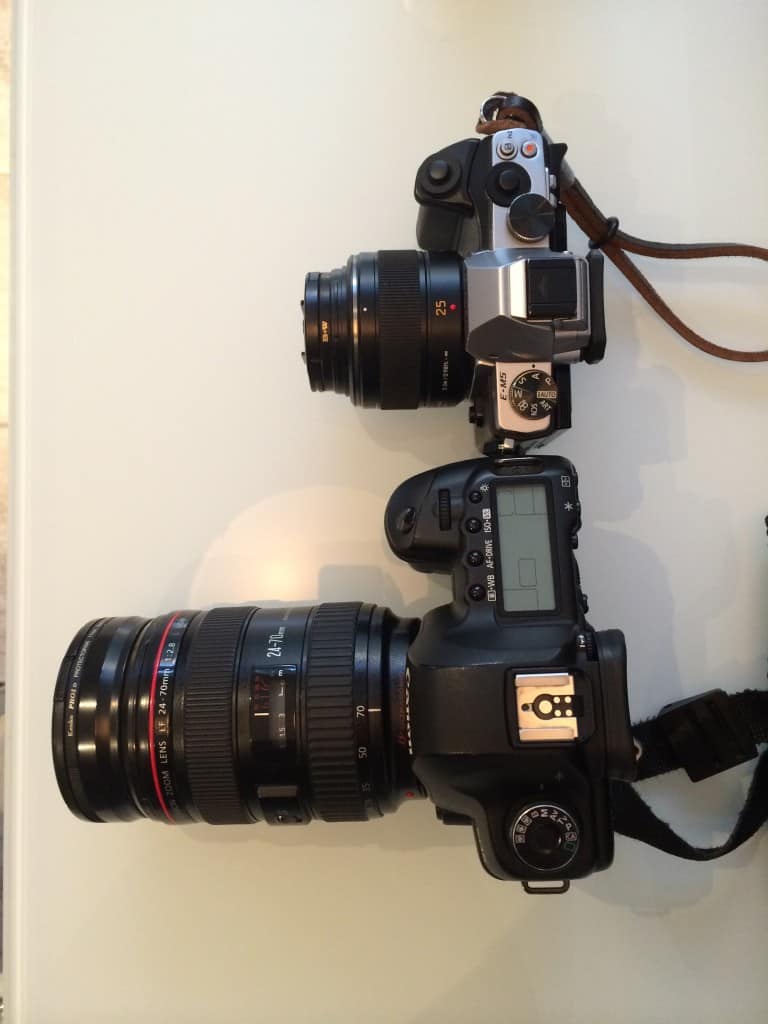
Picture Quality
I will have to say that picture quality wise that both formats are winners in their own way. So it “depends”. I’m not going to get all technical with the specifications because none of that really matters when you’re out on the road shooting. This is just my perspective from the output I’ve seen from shoots I’ve done. As a baseline I shoot everything in RAW and post produce everything in Lightroom.
Where Micro Four Thirds wins
- Image quality on my OM-D has been spectacular and if you don’t pixel peep, your photos will look as good as any DSLR out there.
- For it’s size, incredible dynamic range, beautiful colors and near-perfect white balance. The little computer inside does an incredible job
- Image stabilization is effective and is necessary for shooting at lower ISOs and slower shutter speeds
- More than enough megapixels to enlarge and make prints out of so just because it’s less than others out there doesn’t mean it’s less capable
- In my mind it’s all about tradeoffs and for what it is, Micro Four Thirds produces outstanding photos. Even as a professional shooter I’m blown away.
Where Full Frame wins
- Smaller sensor size for Micro Four Thirds will naturally make it hard to compare to Full Frame.
- Able to achieve shallower depth of field. It’s a lot easier to create those creamy bokeh shots with full frame
- Better low light sensitivity. I can comfortably shoot at 3200 ISO on the full frame vs 1600 on the Micro Four Thirds. It’s safe to say I can’t really use the micro four thirds to shoot indoor wedding receptions
- When you pixel peep, you definitely notice more imperfections in Micro Four Thirds but that’s a bit unfair since it’s 5,616 × 3,744 pixels vs 4608 x 3456 pixels.
- Overall I’ve noticed photos aren’t as sharp on my Micro Four Thirds
At the end of the day, a full frame DSLR is going to produce higher quality images. It’s in the physics of the sensor and there’s no going around it but if you’re not looking to go pro, and contemplating an APS-C sensor DSLR then consider micro four thirds because they are on par or better. The rise of the DSLR these past 5 years has created this phenomenon where people have been buying them without considering other options. If you have no intention of going pro, I think a mirrorless camera is as good of an option as an APS-C sensor DSLR
Who is the Micro Four Thirds for
- Someone considering a DSLR because everyone else seems to be getting one
- Doesn’t want to deal with the bulk and weight of a DSLR
- Wants image quality that matches and in some areas beats your entry level DSLR. You won’t even be able to tell the difference.
- Wants the ability to change lenses based on the situation
- Enjoys having all the modes of an SLR (manual, aperture and shutter priority)
- Suitable for any beginner to advanced photographer
- Want to be a photographer where your subjects don’t get nervous when you shoot. You don’t think it happens but in a casual environment, people are more apprehensive about taking an DSLR photo vs a “point and shoot looking thing”.
The Perfect Travel Camera
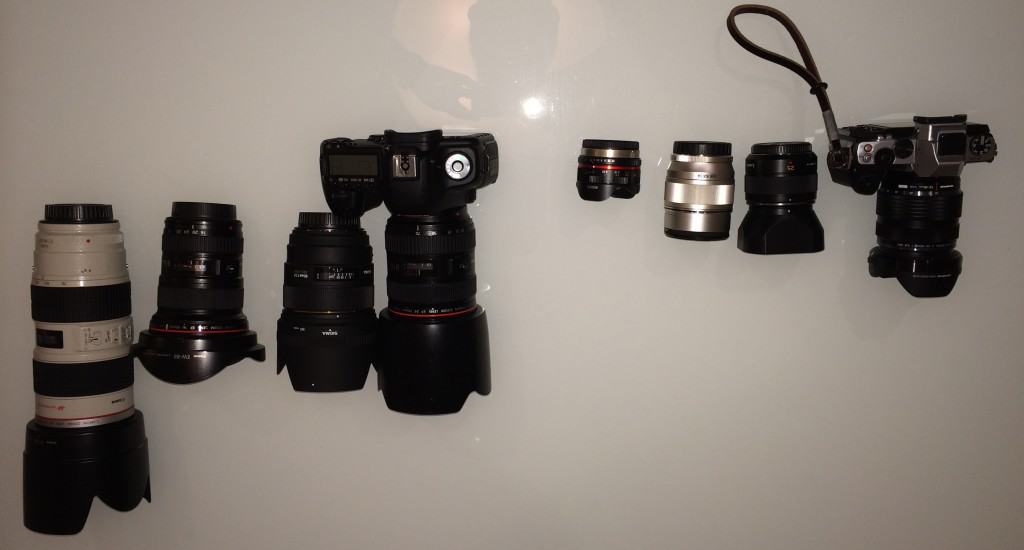
So the reason why I ultimately settled with this camera was because it was the perfect balance of image quality, advanced features, interchangeable lenses with a smaller form factor, lighter weight and lower price. I’ve taken it around Toronto and exclusively to NYC and California and never felt that I needed anything more.
It was perfect because:
- If I felt like going bagless I could easily just carry the camera using the wrist strap. It’s that light. I did that on a few occasions in NYC when we were going around the neighborhood for lunch or dinner. I could never just take it out without a bag if I was using a DSLR
- My shoulders thanked me
- With a bag as big as my DSLR bag, I could fit an extra two lenses AND still be lighter than before
- My lens collection could cover all ranges and because of the size, gave me more of an opportunity to play around with different lenses than I would normally use like fisheye and primes in general. It was also way easier to change lenses by myself
- It was awesome for street photography because I could discretely keep the camera at waist level and use the tiltable screen to see what I was shooting. Same went for top down and bottoms up shots. I could never really do that with my DSLR. I would just blindly shoot it and hope for the best
- The total cost of my set up was $2000 (I kind of went a little crazy with it I know) vs easily $10,000 with my full frame gear
- Even my girlfriend loves this camera more. Way less complicated and heavy
- I was able to jam at a concert with this camera. Would have been near impossible with an SLR. I just let it hang around my wrist
- I’ve since used it to film my video blogs and it does a great job filming in HD. Would totally use it on the road too
Conclusion
I’m super happy with my choice to stick with micro four thirds. Olympus and Panasonic are continuously trying to one up each other with lenses and bodies that it makes for some really great innovation for years to come. For any non professional work it’s my go to camera right now. I’m getting so comfortable with it that i’m also going to be using it as an additional body for weddings next year.
Bottom line is that if you’re considering to get a camera, think about mirrorless options and more specifically micro four thirds. For some reason their marketing is quite terrible and not as many people know about them but I believe it’s better than the competition out there.
Sample photos
You be the judge. Check out a few samples of my work between the Olympus OM-D E-M5 and the Canon 5D Mark II.
Olympus OM-D E-M5





Canon 5D Mark 2



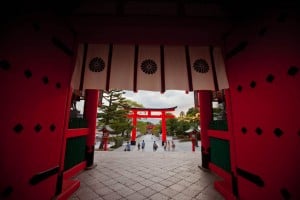
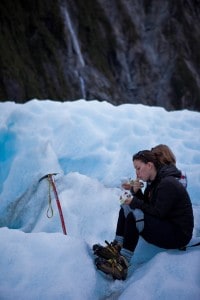
What you should read next